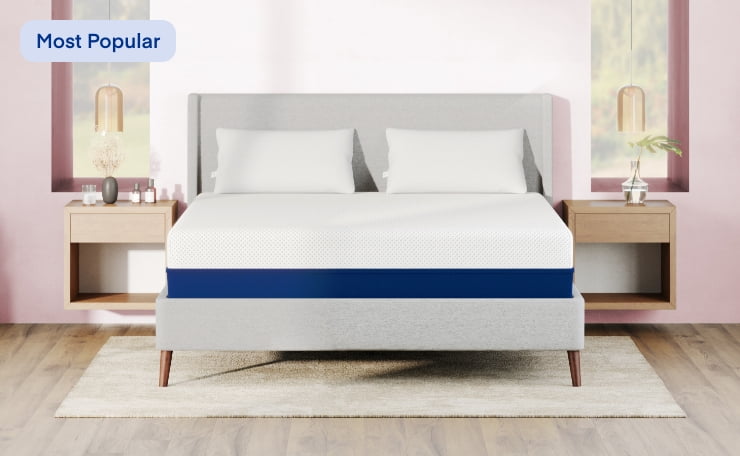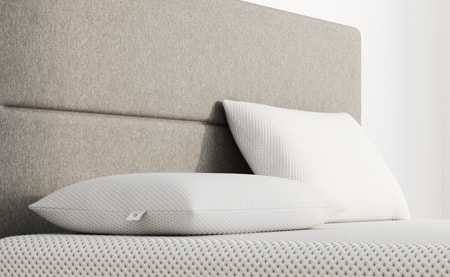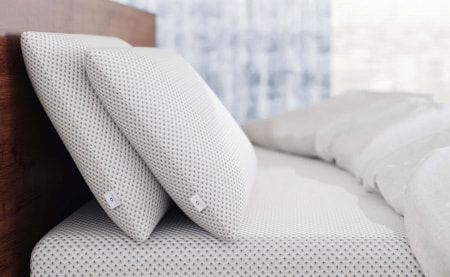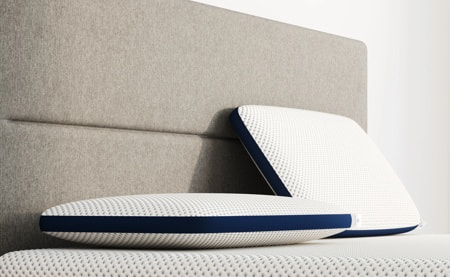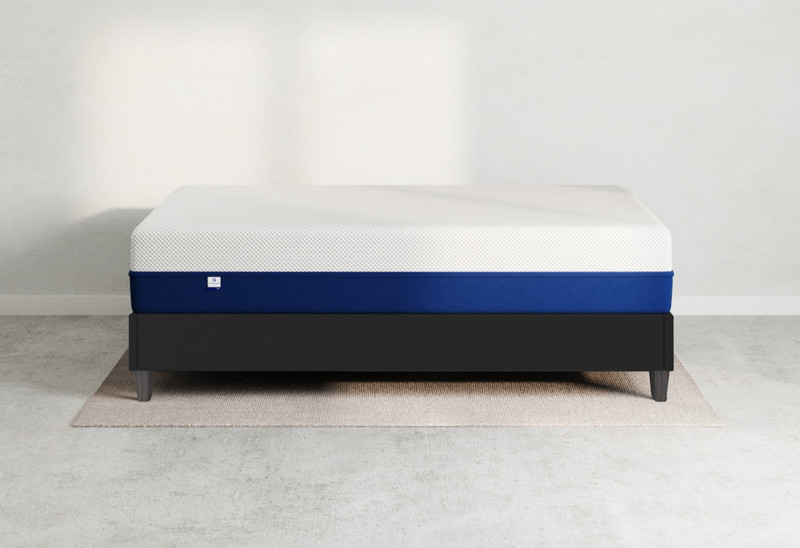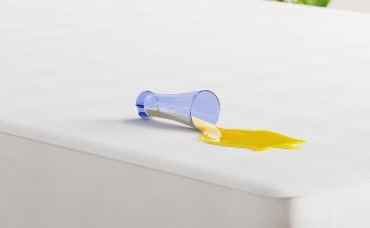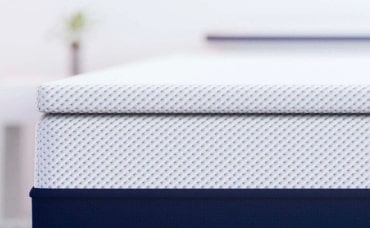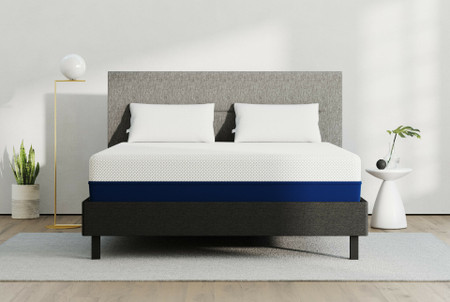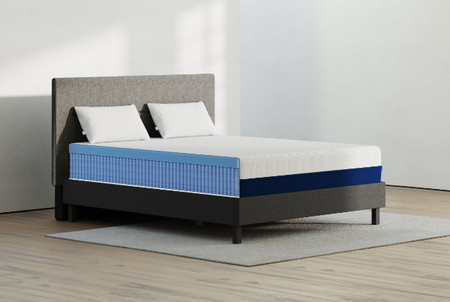Amerisleep Mattress Reviews and Comparisons
Read verified Amerisleep reviews from real customers and see how we compare with other brands
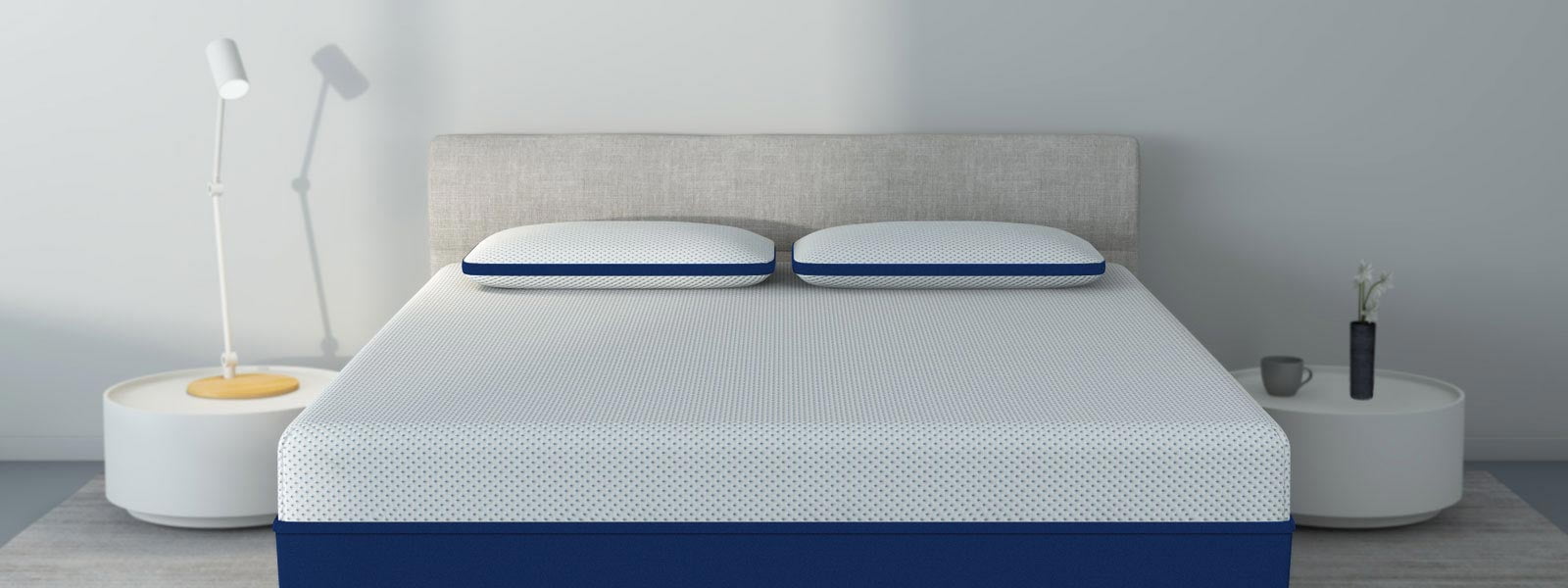
Most people searching for a new bed reference mattress reviews to help them make a decision. They want to read unbiased opinions from real customers. And they want to see side-by-side comparisons between different mattresses.
This gives consumers a better idea about the merits of a given brand — free from the sales and marketing hype.
That's why we created this page — to make it easy for you to decide if an Amerisleep mattress is right for you.
You'll find reviews from actual Amerisleep customers verified by a third-party (that means we haven't altered a word). And you'll see comparisons between Amerisleep other brands, based on third-party research.
Our goal is to help you make the best, most informed decision possible about buying a new mattress. So check out the bed reviews below and then come to your own conclusion.
You'll find reviews from actual Amerisleep customers verified by a third-party. And you'll see comparisons between Amerisleep other brands, based on third-party research.
Short on time? Featured in this post
What to look for when reading reviews
Reviews from other customers can help you "see yourself" in your new mattress before you buy it. But different people have different preferences and sleep styles. What works for someone else may not work for you. That can make it hard to tell which reviews you should listen to and which don't apply.
At the same time, professional review sites test many more beds than the average person. That means they can often give you a more diverse opinion, but you also need to be careful about their motives. Sometimes they get paid to recommend a certain brand.
That's why we wanted to highlight some of the most important things to look for in the reviews you read. This can help you weigh the different points of view you see and make a better decision.
Be careful about [professional review sites] motives. Sometimes they get paid to recommend a certain brand.
Mattress type, construction & support
The #1 thing we think you should look for in a new mattress is how well it supports you. You wouldn't buy a house if you found out its foundation was shaky — no matter how nice it was. And the same thing is true for mattresses. The materials that a mattress uses to support you will have the largest impact on your comfort. Most modern mattresses use one of three main materials:

1. Innersprings
These mattresses use metal springs to support you. More comfortable models will use a larger number of springs and put them in separate "pockets." But compared to memory foam, innersprings score 20 percentage points lower in customer satisfaction.
Pressure points and motion transfer are the biggest complaint about innerspring mattresses. The springs push up on you as you sleep, forcing your spine out of alignment and possibly causing pain. The springs also transfer motion, so if you sleep with a partner, one person’s movement can disturb the other.

2. Memory foam
Memory foam mattresses get the highest customer satisfaction scores. This gentle foam compresses under pressure and cradles you as you sleep. That's how it prevents pressure points and keeps your body in alignment.
Older memory foams had problems with overheating and responsiveness. People would complain they felt "stuck" when trying to move because the foam didn't bounce back. But new methods for creating memory foam have largely fixed these problems.
"Open-cell" foam bounces back in seconds and doesn't trap warm air, so you stay cool. And plant-based foam, like Amerisleep's Bio-Pur® layer, is even more cooling and responsive. Plus, it's better for the environment, since it comes from renewable sources. The familiar off-gassing odor accompanying many memory foam mattresses has been eliminated by more eco-friendly manufacturing and plant-based foams.

3. Latex foam
Latex foam mattresses have more "bounce" than memory foam and can be made with 100% organic sources. Natural latex is high-quality and can last for years.
However, latex mattresses are much more expensive than typical beds. Most consumers opt for innerspring and memory foam mattresses instead. Finding a good latex mattress can be difficult too since only a few reputable brands offer them.

4. Hybrid mattresses
Hybrid mattresses combine contouring foam layers and responsive innerspring coils to offer sleepers a cushioning but bouncy sleep experience. Some also feature plush Euro or pillow tops for extra comfort. Hybrids were designed to highlight the benefits of both foam and innerspring mattresses while minimizing their drawbacks—these beds are more breathable than all-foam beds, but don’t transfer motion like a standard innerspring.
We recommend hybrid mattresses to sleepers who prefer a bouncier bed but still want or need the pressure relief of foam layers.
Sleep style & firmness options
Once you've found out how a mattress will support you, you need to decide how much of that support you need. One of the keys to a good night's rest is keeping your spine and neck aligned. Your preferred sleeping position determines the level of support and pressure relief needed.
That means, when you're looking at reviews, you need to consider your sleep style:

Back sleepers
Back sleepers are often most comfortable with a medium-firm mattress. In fact, Business Insider called our medium-firm mattress — the AS2 — "The best mattress for back pain."

Side sleepers
Side sleepers typically want a soft mattress. When you sleep on your side, your hips and shoulders need a lot of room to sink into the mattress, and a soft mattress will give you the increased cushion you need.

Stomach sleepers
Stomach sleepers usually do best on a firm mattress. But be careful, because sleeping on your stomach puts the most amount of tension on your neck and spine. We don't recommend that you sleep on your stomach.
Combo sleepers
Combination sleepers rotate through several sleep positions during the night. That means they need a mattress that works in all situations, which is often a medium on the firmness scale.
Extra features
Once you know how much support you'll get from a mattress, consider its extra features. The two most common places to look are the mattress cover and updates to the support material.
For example, Amerisleep mattresses use a soft and ultra-breathable cover to help prevent overheating, so you sleep your best each night
Other examples of cover features include soft material or cooling gel.
Some mattresses also make updates to the support material for better performance. Among innerspring mattresses, coils in separate pockets are the most comfortable. In our mattresses, we use HIVE® technology to facilitate better spinal alignment and improve airflow. HIVE® offers targeted support for the head, torso, and feet to promote healthy sleeping positions, meanwhile, HIVE® is softer under the shoulders and hips to prevent pressure points.
Sleep trial & warranty
At this point, you've checked how a mattress provides support, how firm or soft it is, and if it has any extra features. That covers the most important details about the mattress itself. But mattress shopping can be a large investment of time and money, so you want to make sure you're covered if something goes wrong.
That's why you should also look for reviews that highlight the trial period and warranty. It can take up to 30 days to adjust to a new mattress, so that's the shortest trial period you should accept. And ideally you should get a few months to give your new mattress a try.
Some brands promote exaggerated trial lengths (like a year) as a marketing gimmick. But for practical purposes, around 100 nights gives you all the time you need to make an informed decision.
You'll keep your new mattress for years though — not months. So you also want to protect your investment after the trial period, which is where the warranty comes in. If your mattress has a defect covered by the policy, you'll get a new mattress for free (or sometimes a reduced price). When comparing a warranty, look for three things:
It can take up to 30 days to adjust to a new mattress, so that's the shortest trial period you should accept. And ideally you should get a few months to give your new mattress a try.
1. Warranty length
Make sure the warranty covers you for as long as possible. Ten years is the shortest you should accept. Our own warranty lasts 20 years.
2. Warranty criteria
Check what "covered defects" are part of the policy. These terms spell out what needs to happen before you can use the warranty to get a replacement.
Pay special attention to sagging. If your mattress sags, it can provide uneven and uncomfortable support. Even worse, it can throw your body out of alignment and potentially lead to pain.
You want the warranty to cover the smallest amount of sagging possible. Ours applies for sagging that’s deeper than 1.5” inches.
3. Warranty redemption
Also, look at what happens if you need to use the warranty. The best coverage will replace your mattress free of charge — at least for part of the warranty period. "Prorated coverage" means you'll pay a portion of the replacement mattress price. The amount you pay is based on how long you've owned your current bed. The longer you've had it, the higher your out-of-pocket costs will be.
As an example, the Amerisleep warranty covers you for 20 years. Within the first 10 years, we'll give you a free replacement. For the second half of the warranty period, we'll give you a prorated replacement. And at all times, we'll honor the warranty as soon as sagging reaches 1.5” inches.
For both the trial and warranty, you need to be careful about the fine print, too. Some brands may charge you massive restocking and return fees. But the best businesses will back their products with 100% money-back and replacement policies. Don't settle for a company with lower standards.
Customer service & company history
Last, look for information in the reviews about the mattress company behind the bed. It doesn't matter how generous their warranty and trial period are if you can't reach their support team.
It's helpful to read reviews that mention how the business addresses customer issues. You want to read reviews that feature a customer problem and the company’s solution.
You can also put more trust in a brand that has been around for a while. Sometimes mattress companies that sell a low-quality product and don't support their customers can sneak by short-term. But long-term, word of mouth spreads and those businesses go under. If you see a company with a long history of success, that's another positive sign.
You can also put more trust in a brand that has been around for a while...If you see a company with a long history of success, that's another positive sign to take into account.
Order today and you'll be sleeping better in a week or less. Backed by our 100-night trial and free returns.
order nowAuthentic & verified Amerisleep mattress reviews
Now that you know more about what to look for in the reviews you read, we wanted to share a few of ours.
Remember, a third-party has verified every review here. That means they're all authentic reviews from real Amerisleep customers. We haven't touched a single word, letter, or comma.
If you want to see how Amerisleep stacks up with other mattress brands now, you can view our side-by-side comparisons. Or if you want to see even more customer reviews, you can read them below.
See how Amerisleep compares with other brands
Reading customer reviews helps you see how you might feel in a given bed. But to make the best decision, you also need to understand how that mattress compares with others on the market. That's why, on top of customer reviews, you should also look at side-by-side comparisons.
Comparisons that provide "summaries" mean you have to trust the writer's opinion. But like we mentioned before, some sites get paid to suggest certain brands. And it's easier to "hide" the facts when, instead of using numbers and yes/no criteria, you're writing a summary.
The most reliable comparisons only showcase things you can measure. Things like:
- How many inches thick a layer or entire mattress is.
- The price of the mattress (compare prices of the same size mattress for each brand).
- How many models a brand carries.
- "Yes/No" features — either the mattress has it or it doesn't. It's not open for interpretation.
That's why, with most of the comparisons below, you will only see numbers and yes/no measurements. We didn't want our opinion to get in the way when we compare Amerisleep with other brands.
We wanted the comparisons to be as comprehensive as possible, too. We didn't want to "cherry-pick" the criteria that make us look good, and leave out the rest.
Instead, we chose the categories based on what independent, third-party research says people care about. For example, consumers rated how important various comfort features were to them. Respondents listed “targeted back support” (81%), “no sinking” (73%), and “stays cool” (60%) as top concerns.
Don’t just take our word for it, though. You be the judge. As you read these Amerisleep comparisons, ask yourself if we left any major areas out.
- 81% target back support
- 73% no sinking
- 60% stays cool
Important features for consumers related to the comfort and support of a mattress.
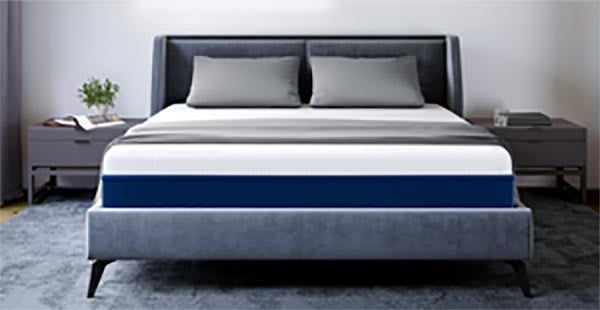
Purple vs. Amerisleep
Purple claims their beds are better because of scientific evidence. Yet we couldn't find one peer-reviewed study or government citation for Purple. In total, Amerisleep beats Purple by 69 percentage points in this 16-point comparison. Amerisleep gets a 94% (15/16) while Purple only scores 25% (4/16)
Amerisleep vs. other brands at a glance
| Mattress Brand | Number of Models | Plant-Based | CertiPUR-US | Free Trial | Years in Business | Warranty |
|---|---|---|---|---|---|---|
| Amerisleep | 5 | Yes | Yes | 100 Nights | 11 | 20 Years |
| Tuft & Needle | 1 | No | Yes | 100 Nights | 5 | 10 Years |
| Purple | 4 | No | Yes | 100 Nights | 3 | 10 Years |
| Leesa | 1 | No | Yes | 100 Nights | 3 | 10 Years |
| Serta iComfort | 5 | No | Yes | Not Free - 120 | 87 | Varies |
| Loom & Leaf | 2 | Yes | Yes | 120 Nights | 7 | 15 Years |
| Saatva | 3 | No | Yes | 120 Nights | 7 | 15 Years |

Interested in an Amerisleep mattress?
Discover which of our five models perfectly matches your sleep style now.
Shop Amerisleep Mattresses nowFAQs
We recommend the Amerisleep AS3 as the best mattress because it’s the perfect medium mattress—versatile and comfortable enough for side, combo, and some back sleepers without losing any support. It comes with plant-based Bio-Pur®, which has been shown to be 5 times more breathable than traditional memory foam. The high-density Bio-Core® resists sagging for years to come.
Currently, there are nearly 200 bed in a box mattress brands out there—not to mention all the mattresses only available in brick and mortar stores! How can you possibly choose? The best brand will have a generous sleep trial and warrant and their mattresses will stand the test of time. Amerisleep has a 20-year warranty, a 100-night sleep trial, and they’ve perfected their foam beds to create the most comfortable sleep experience possible.
Budget plays a large part in your ultimate mattress choice. You might think you have to spend thousands and thousands of dollars to get a high-quality bed, but that’s not necessarily true. Certain things will factor into the cost of a mattress, such as the warranty length, materials, and brand name. In general, you should expect to spend anywhere from $500-$1500 for a good-quality queen-size mattress.
Watch out for extra features that may drive up the cost of the mattress but don’t add much to the support or comfort level of the bed.
It’s no surprise that hotel mattresses seem like the most comfortable bed we’ve ever slept on—after all, a good night’s sleep is a huge part of your hotel experience, so many hotels invest a lot into their beds. Most hotels use innersprings with plush pillow tops, although some use memory foam beds as well. Keep in mind they also use luxury bedding and supply plenty of pillows for the bed, so your sleep experience in a hotel might be different than the one you have at home.
Edge support refers to how much a mattress sinks (or doesn’t) when you sit on its edge. Thinner, more flexible mattresses are more likely to sink around the edges. If this bothers you, invest in a mattress with sturdy bases like high-density foam or pocketed coils. The Bio-Core® in all Amerisleep mattresses resists sag for years, allowing us to offer a longer-than-average warranty (20 years).
If you’re outside of your sleep trial and your mattress isn’t soft or supportive enough, a topper can be an affordable and easy solution. Amerisleep’s Lift layer can be placed atop any of their mattresses; customers can choose between comfort or support depending on their needs. The comfort layer uses Bio-Pur®, while the support layer uses Affinity foam.
If you decide on a topper, take into account its thickness since it can change the fit of your sheets.
Average-sized sleepers can be comfortable on many different mattress types and firmness levels. However, if you’re petite or heavier, you will need to consider a few different things before purchasing. Heavyweight sleepers compress their mattresses more deeply, so they should choose a mattress at least 12 inches thick. Additionally, their mattress should offer an even balance of support and softness with a very sturdy core.
Lightweight sleepers don’t compress their mattresses as deeply, so they should steer away from firmer beds since these might misalign their spine, hips, or pelvis.

